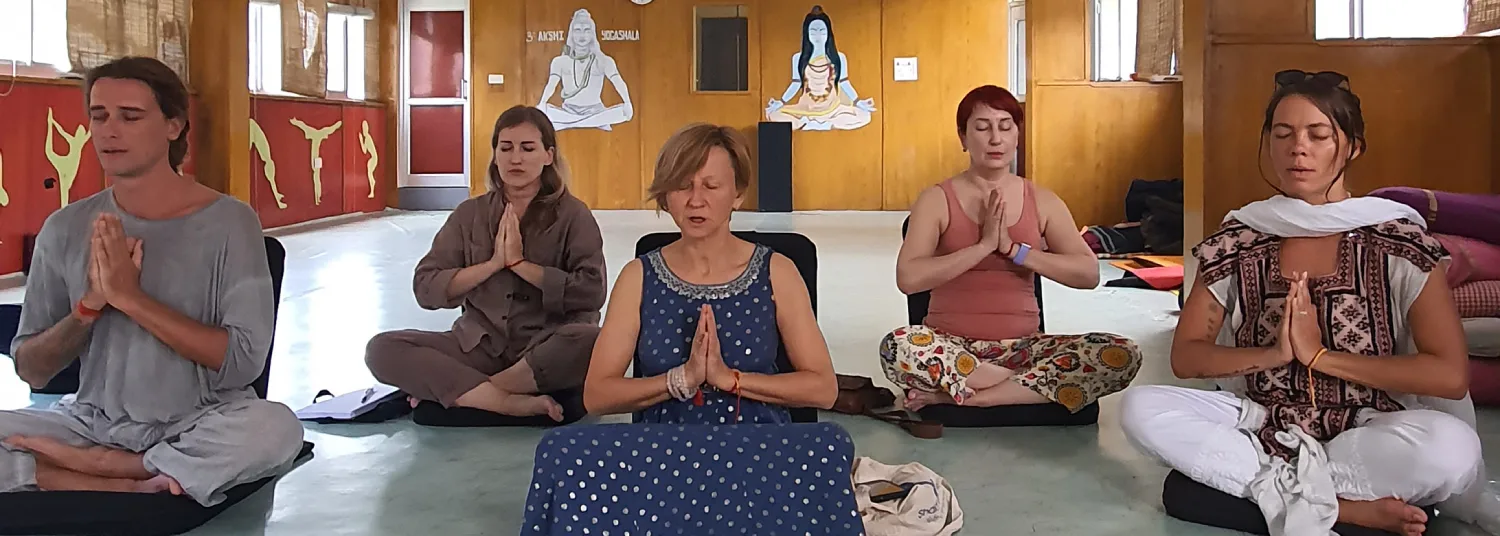Rishikesh holds its place in the Himalayan foothills where people recognize it as the global center of Yoga practice. As an enchanting town with peaceful environments and spiritual atmosphere Rishikesh draws spiritual seekers from all global regions who want to study profound practices that connect their physical body with their mind and spirit. Yoga exists in different forms which vary in their attributes. These classes represent distinct styles which share independent methods to discover oneself while working toward better health.
Introduction to Rishikesh and its significance as the yoga capital of the world
Rishikesh resides in the Himalayan foothills where people often name it the global center of yoga practice. Thousands of visitors annually visit this peaceful town because it combines sacred riverfronts and verdant landscapes to promote yoga-based spiritual and physical development. Rishikesh creates an exceptional setting for yoga practice that welcomes practitioners who range from newbies to experienced practitioners because of its historic customs and rich ancient rituals.
Yoga started in ancient India approximately 5000 years ago when people developed it as a total solution to health and spirituality. Multiple philosophies within this tradition unite principles which link all components between body, mind and spirit. The traditional art has developed multiple styles in Rishikesh which accommodate different types of needs for anyone seeking relaxation or advanced practice.
Your yoga learning experience at an Indian yoga learning sanctuary leads you toward personal transformation and self-recognition. The following section examines various yoga methods accessible in Rishikesh that students can experience during their transformational 200 Hour Yoga Teacher Training in Rishikesh.
Brief history of yoga and its origins in India
The practice of yoga exists in ancient Indian traditions which stretch back more than 5000 years. When it first appeared yoga served as an approach to discover enlightenment combined with personal self-realization. The foundational references to yoga appear in the sacred writings known as Vedas and Upanishads.
The practice started beyond the stretch of physical postures due to its inclusion of spiritual meditation and philosophical wisdom alongside ethical life principles. Through successive generations sage teachers propagated these teachings while studying human integration of mental and physical components.
Various new styles have appeared throughout history. Every movement system represents distinct philosophical approaches and aims between building physical strength and attaining spiritual enlightenment.
The global acceptance of yoga today has exceeded geographical limits as people became fascinated with its Indian roots without disturbing its core philosophy.
Traditional Hatha Yoga: Its principles, benefits, and popular poses taught in Rishikesh
Traditional Hatha Yoga is a foundational practice that embodies the essence of yoga as a holistic discipline. It emphasizes balance between body and mind through various postures, breath control, and meditation.
In Rishikesh, practitioners are introduced to its core principles. These include alignment in poses (asanas), mindful breathing (pranayama), and deep relaxation techniques. Together, they create a harmonious flow that nurtures both physical endurance and mental clarity.
Popular poses often taught here include the Downward Dog (Adho Mukha Svanasana) for strengthening limbs and the Cobra pose (Bhujangasana) for enhancing flexibility. Each posture serves specific benefits like improved circulation or stress relief.
The serene backdrop of Rishikesh enhances this experience further. The Ganges River’s tranquil presence amplifies one’s connection to nature during practice, making it an ideal setting for those seeking inner peace through traditional Hatha Yoga.
Ashtanga Yoga: Understanding the dynamic flow and spiritual aspect of this practice in Rishikesh
Ashtanga Yoga is a vibrant practice deeply rooted in Rishikesh’s spiritual landscape. Known for its dynamic series of postures, it seamlessly combines movement with breath. Each pose flows into the next, creating a rhythmic dance that energizes both body and mind.
Practitioners often find themselves immersed in meditation through motion. This connection fosters inner peace and heightened awareness, inviting deeper introspection. The emphasis on breath control—ujjayi pranayama—adds a unique layer to this experience.
In Rishikesh, experienced teachers guide students through the Ashtanga sequence with precision and care. They encourage personal growth while respecting individual limits. Classes range from beginners to advanced levels, making it accessible for all who seek transformation.
The spirit of community thrives here as practitioners support one another on their journeys towards enlightenment. This powerful practice not only strengthens physically but also nurtures the soul in profound ways.
Vinyasa Yoga: The importance of breath-synchronized movements and variations taught in Rishikesh
Vinyasa Yoga, often referred to as “flow” yoga, emphasizes the seamless connection between breath and movement. In Rishikesh, practitioners harness this dynamic flow to create a meditative experience that transcends physical exercise.
Each pose transitions fluidly into the next, allowing students to explore various sequences while maintaining an awareness of their breath. This synchronization fosters a deeper sense of presence and mindfulness during practice.
Rishikesh’s serene environment amplifies Vinyasa’s benefits. The gentle sounds of nature inspire participants to deepen their focus. For many, it becomes more than just a workout; it’s an immersive journey into self-discovery.
Variations in poses cater to all levels, making it accessible for beginners while still challenging experienced yogis. With skilled instructors guiding each session, learners can experiment with different sequences tailored specifically for their needs and aspirations on the mat.
Kundalini Yoga: Exploring this powerful practice for inner transformation in Rishikesh
Kundalini Yoga is often referred to as the yoga of awareness. It combines dynamic breathing techniques, postures, and meditation to awaken dormant energy at the base of the spine.
In Rishikesh, this practice emphasizes spiritual growth and self-discovery. The serene environment amplifies its effects, allowing practitioners to connect deeply with their inner selves.
Classes often begin with chanting mantras. This sets a meditative tone that prepares both body and mind for transformation.
Each session includes specific kriyas—sets of exercises designed to unlock energy centers throughout the body. These movements are rhythmic and can lead to profound emotional release.
Participants may experience heightened states of consciousness during practice. Many find it liberating as they explore layers of thought that were previously hidden.
Whether you’re seeking personal growth or healing, Kundalini Yoga offers a unique path in this sacred land where spirituality thrives.
Other popular yoga styles offered in Rishikesh, such as Iyengar, Yin, and Power Yoga
Rishikesh is a melting pot of diverse yoga styles, catering to every kind of practitioner. Iyengar Yoga emphasizes precise alignment and the use of props. This method helps students develop strength while deepening their understanding of each pose.
Yin Yoga offers a contrasting approach, focusing on long-held passive stretches that target connective tissues. It’s perfect for those seeking relaxation and introspection amidst Rishikesh’s serene landscapes.
Power Yoga brings an invigorating twist to traditional practices with its athletic intensity. This dynamic style builds endurance and flexibility through vigorous sequences, attracting fitness enthusiasts looking to challenge themselves.
Each yoga school in Rishikesh uniquely presents these styles, ensuring that practitioners can find what resonates most with them. Whether you’re searching for stability or fluidity in your practice, there’s something here for everyone eager to deepen their journey into yoga.
Choosing the right style for you based on your Goals
The selection of your style needs to match your personal objectives as well as your preferences during your yoga practice. The different yoga styles deliver unique advantages that you can learn to understand before making your choice.
To establish a solid foundation of practice, Hatha Yoga provides you with optimal results. Starters and experienced yoga practitioners will discover value in Hatha Yoga because it establishes fundamental postures and breathing practices. People who want energetic movements should practice Ashtanga because its regimen enhances fitness levels while facilitating spiritual progress.
Vinyasa Yoga should be your yoga style choice if breathing rhythm during movement exercises appeals to you. its smooth movement patterns make the practice stimulating yet it builds both muscle power and body flexibility. A deep desire for personal transformation might match your spiritual path since Kundalini Yoga works to awaken life energy.
Everyone should experiment with Iyengar Yoga due to its focus on precise movements and Yin Yoga for discovering mind and body relaxation through meditation. A practice of Power Yoga combines quick muscle definition development through vigor with mindful sessions.
Your decision will be guided by the factors that attract you to yoga practice. When undergoing Yoga Teacher Training in Rishikesh students should sample various classes to figure out their spiritual alignment. Through your individual practice discovery you will enhance both your practice techniques and the value of the moment lived at this peaceful location titled “yoga capital of the world.”.


